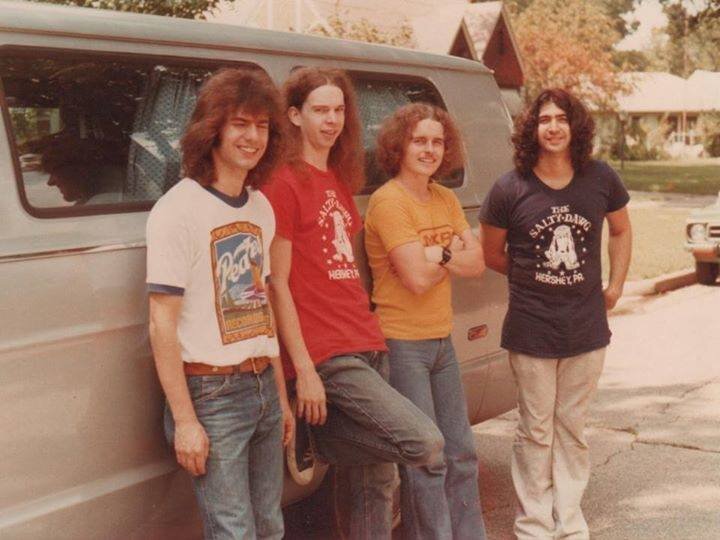PAT METHENY GROUP
San Lorenzo
Phase Dance
Jaco
Aprilwind
April Joy
Lone Jack
PLAYERS: Pat Metheny (g), Lyle Mays (p, synth, autoharp), Mark Egan (b), Dan Gottlieb (d)
REFLECTIONS
LYLE: The first notes one heard on the first album we released, the White Album as so many have called it, were on an electric 12-string with an alternate tuning, That was followed by a giant autoharp chord. The first melody which followed was on fretless bass doubled with left-hand piano. Within seconds we had demonstrated that we were going to orchestrate the music like some kind of chamber ensemble. At the height of fusion and narrow tie retro jazz, we sounded like nobody else. We played compositions not tunes. There was a kind of magical sweet spot involving Midwestern sincerity and Classical principles which probably required two precocious kids from the Midwest to find. I don’t know, I was just so thrilled to be on that wild ride.
DAN GOTTLIEB: In putting this music together, parts of songs would come from Lyle, and Pat and we would try things and see what would would work. Sometimes there was a specific idea-play this with more of an open feel, play this on the cymbal, etc, but it was usually left to us to figure out a part that would work. I spent a lot of time talking about grooves with Mark Egan, and we would try to find rhythm section parts that we could play that would provide the most solid foundation. I liked the sound of the autoharp, and at that point it was “what sounds can we add to make this sound even more interesting?” Even I played autoharp on something and even played a keyboard part on one tune as well. And the way Lyle used the Oberheim- combined with acoustic piano, it became an integral part of the group sound.
I didn’t realize that what we were playing would be historic. I was just happy to be playing with Pat, Mark and Lyle in this band. I felt a sense of “bringing the music to the people” and I really loved the music, and wanted people to like it. I really wasn’t thinking of the long term implications… just that I wanted to keep improving as a player and growing as a group.
On “San Lorenzo,” I would hang on Lyle’s every note and just try to flow with his solo. That flat cymbal with rivets worked really well behind that solo.
When I hear that music a few things come to mind. First - I like the songs; second, I like the soloing; third, I like the way Mark and I play together; and fourth, that I like the blend of acoustic and electric instruments; and fifth, the wide range of dynamics within each song.
MARK EGAN: I loved these songs from the very first run through at our Boston rehearsals. The early arrangements were very well thought out by Pat and Lyle and we worked on the forms and grooves as a band as well as the use of dynamics. The arrangements gradually evolved during our constant touring and by the time we arrived in Oslo a year later to record them, we basically played the songs down with the exception of Lyle’s synthesizer, overdubs, Pat’s additional guitar parts and a few bass doubles of the melody on “San Lorenzo” and “Jaco.”
I didn’t feel like it was musical history because it was so fresh and we were in it at the moment. I did feel that it was something very special though as it was being so warmly and widely received by audiences all over the world.
All of Lyle’s moments on that record are memorable. We were so focused in the few days that it took to record the White album that everything that Lyle played was so inspiring. I do remember specifically getting chills during “San Lorenzo” as we were in the peak of Lyle’s piano solo section. That is one of my favorite songs from that record.



